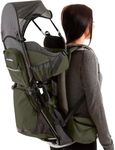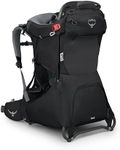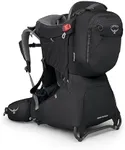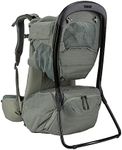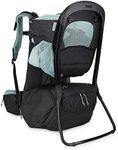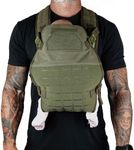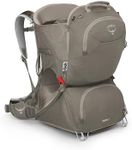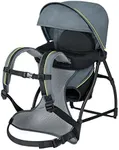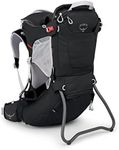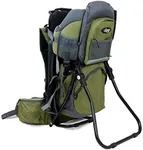Buying Guide for the Best Hiking Backpack Baby Carrier
Choosing the right hiking backpack baby carrier is crucial for both your comfort and your baby's safety and happiness. When selecting a baby carrier for hiking, you need to consider several key specifications to ensure it meets your needs and provides a pleasant experience for both you and your child. Here are the main factors to consider when picking the best hiking backpack baby carrier for you.Weight CapacityWeight capacity refers to the maximum weight the carrier can safely hold, including your baby and any additional gear. This is important because exceeding the weight limit can compromise the carrier's safety and durability. Weight capacities typically range from 30 to 50 pounds. If your baby is on the heavier side or you plan to carry extra items, opt for a higher weight capacity. For smaller babies or shorter hikes, a lower capacity may suffice.
Comfort and FitComfort and fit are crucial for both the parent and the baby. Look for carriers with adjustable straps, padded shoulder straps, and a supportive hip belt to distribute weight evenly and reduce strain. Some carriers also offer adjustable back panels to fit different torso lengths. Ensure the carrier fits snugly and comfortably on your body, and that your baby is securely and comfortably seated. If you plan on long hikes, prioritize comfort features to avoid discomfort and fatigue.
Safety FeaturesSafety features are essential to protect your baby during hikes. Look for carriers with a sturdy frame, a secure harness system, and a sunshade or rain cover to shield your baby from the elements. Some carriers also include a kickstand for stability when loading and unloading your baby. Ensure all safety features are easy to use and reliable. If you hike in varying weather conditions or rough terrain, prioritize carriers with comprehensive safety features.
Storage OptionsStorage options refer to the compartments and pockets available for carrying essentials like diapers, snacks, water bottles, and personal items. This is important for convenience and organization during hikes. Carriers can have minimal storage with just a few pockets, or extensive storage with multiple compartments and large pockets. If you prefer to travel light, a carrier with minimal storage may be sufficient. For longer hikes or if you need to carry more items, choose a carrier with ample storage space.
VentilationVentilation is the airflow provided by the carrier to keep both you and your baby cool and comfortable. This is important to prevent overheating, especially during warm weather hikes. Carriers with mesh panels or breathable fabrics offer better ventilation. If you often hike in hot climates, prioritize carriers with good ventilation. For cooler climates, ventilation may be less critical, but still consider it for overall comfort.
Ease of UseEase of use refers to how simple it is to adjust, load, and unload the carrier. This is important for convenience and efficiency, especially when hiking alone. Look for carriers with intuitive adjustment systems, easy-to-reach buckles, and features like a kickstand for stability. If you frequently hike solo or need to make quick adjustments, prioritize carriers that are user-friendly and straightforward to operate.
